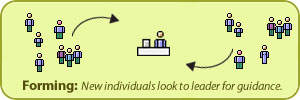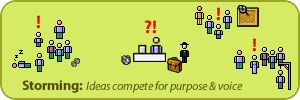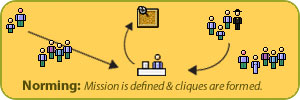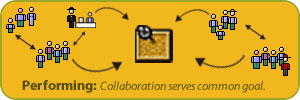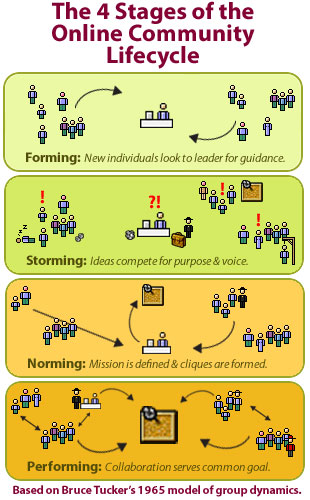There isn’t a person among us that hasn’t been touched by the trauma of divorce.
The WordPress community is suffering a severe separation.
I’m not referring to the fight between “daddy and mommy” as others describe Automattic and WP Engine, rather the procreative and unitive aspects of visionaries and integrators.
The visionaries are the product and service leaders among us that express bold horizon goals for the open source project. They have big ideas about the power of WordPress and the kinds of problems it can solve.
The integrators are the creative and technical contributors that map out the pitfalls and milestones to reach the horizon goals expressed by the visionaries.
Like matrimony, the give and take between a visionary and an integrator is necessary to bring our best ideas to life. Neither can effectively succeed without the other. Both need each other to navigate the perilous forest on their way to the mountain summit.
As with any sacrificial love, the glimmer in a visionary’s eye needs articulation just as the integrator’s mission needs a destiny.
The relationship between visionaries and integrators is an independent third entity that is paramount and set apart.
We know this is true because it is only through the relationship that either is capable of bearing fruit.
The relationship is a living embodiment of sacrifice and potential. It belongs to neither partner alone because both are contributors and both grieve a painful loss when it terminates.
The WordPress marriage of visionaries and integrators has nurtured incredible achievements for 21 years, a remarkable hallmark in software longevity.
Before the rise of social media, WordPress gave nontechnical people a freedom of expression and discovery. It advanced the written word, and has helped ease the human toil of curation and sense-making.
The WordPress community has signaled signs of our rocky relationship since adolescence, yet we are ill-prepared walking through the shadow of the valley of disillusionment.
- WordPress market penetration has stalled in the face of competing frameworks and lucrative closed systems like Shopify.
- Top-down locked-in alternatives like Adobe and Sitecore continue to proliferate in the face of weak evangelization of enterprise WordPress to bring about simplicity, ownership, flexibility, the freedom to empower workers and ease toil at scale.
- We’ve failed to bring economic and technical commercial buyers together on a common platform in service to their strategic goals.
- We’ve fragmented editorial & developer experiences.
- We’re masking the cracks of aging in a web component substructure while the market addresses commercial needs faster and better via modern frameworks.
Through the #wpdrama separation we ask ourselves, “Why is this happening? Why now? How did we get here?”
In our duress, we lose sight of where we are going. We look inward and blame our community.
We argue about attribution without an agreed standard (distasteful) and we speak past each other claiming overt and covert contribution without acknowledging the other (disrespectful).
The sudden exile of strong community members is a sign of death decay. So is our regression to tribalism in search of safety and stability.
We are bogged down with bad ideas and moving goal posts. Our disappointments turn into passive aggressive pettiness, anger, and then resentment. Contempt sets in with a fury, the marital death knell.
Everyone is feeling unseen and unheard, starving two of the deepest longings of every human heart.
As empty nesters in a struggling marriage must rediscover their delight in the other, the visionaries and integrators must rejoin. We need connective tissue to heal and bring new life to WordPress. Should those among us who’ve been cast aside choose to reconcile, our new path forward is through acts of contrition and penance, sincere apologies, grace, and forgiveness.
All contributors to WordPress deserve to be seen and heard. We should everyone back into the fold and celebrate their accomplishments. The tyranny of takeovers and ban hammers must be lifted, and us-vs-them language must be discarded.
Each side needs time and space to examine their conscience and be forthright about their hopes and fears, wants, and needs. Our new paradigm must addresses the serious problems of discipline, accountability, codependency, and healthy boundaries.
Individuals are reeling from lost connections with their community, their employer, a great product, a cause, and hope.
As with any war, the innocent suffer. Individual people in the WordPress community are nursing a deeper wound… The sudden and severe detachment of their personal identity to the the bold promises of open source.
Like many children of divorce, the medicinal effects of time are not sufficient because the loss is irreparable and permanent. Those who are suffering must learn to properly grieve these losses in order to restore their health.
I raise this final point because I see a confusion between self and society among some of the most outspoken among us.
Individual people who’ve dedicated time, talent, and treasure are naturally afraid. They are lamenting past choices and their future livelihood. The incessant infighting is causing long-term injury, and sense-making is nearly impossible wondering alone in the din.
Identifying one’s self with any vision or mission animates our passions and is the natural wellspring of all the good we’ve created! However, when taken to the extreme, we lose our sense of place.
Disorientation is a tragic mistake of boundary confusion by the individual person and needs to be reset to a healthy condition.
Altitude is the antidote to fear, uncertainty, and doubt (FUD).
It’s okay, actually optimal, to step back and reflect on where you stand personally, what lights your flame, and what you have to offer.
Until the dust settles, be sure you are taking the time to properly discern bigger questions about your own heading. What do you want? Where do you want to go?
Take care to not neglect the basics of healthy detachment! Eat well, drink water, go outside, call old friends, listen to podcasts and nostalgic music, learn something new, and practice self compassion.
Get back to your roots and why you were made. Your worth comes from who you are, not what you do.
Feature image is from Julia Eagle on Unsplash


